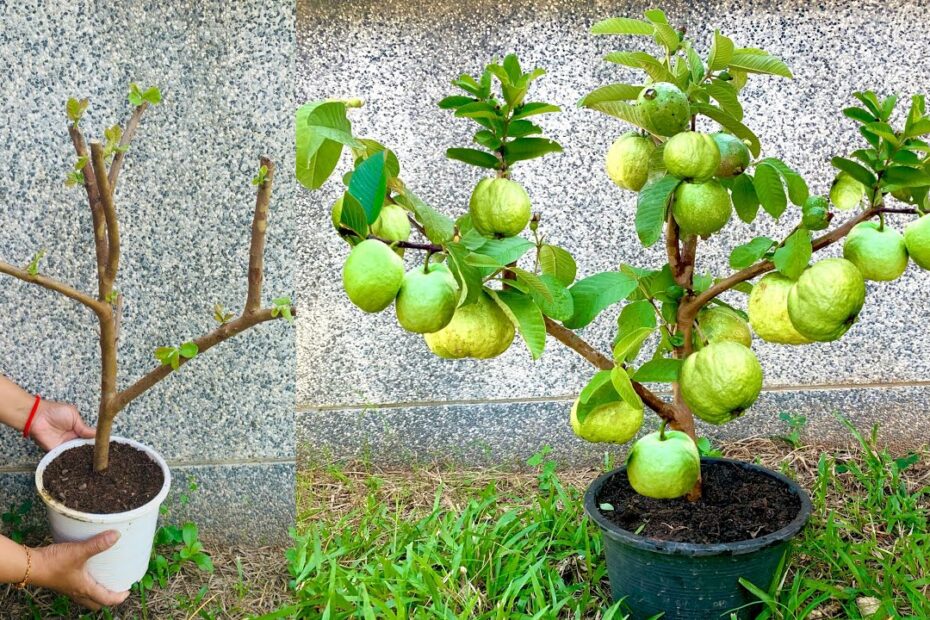Growing a guava tree quickly with the help of aloe vera and chicken (chicken parts or manure) can boost its growth and yield. Aloe vera provides natural nutrients that enhance root growth, and chicken manure is rich in nitrogen and other essential nutrients for plants. Here’s a step-by-step guide:
Materials Needed:
- Guava tree seedling or sapling
- Aloe vera gel (from fresh aloe leaves)
- Chicken manure or chicken parts (like bones or meat scraps)
- Well-draining soil
- Mulch
Steps:
- Prepare the Soil:
- Ensure the soil is well-draining and rich in organic matter.
- Mix chicken manure into the soil. Chicken manure is a great source of nitrogen, phosphorus, and potassium, which will boost the growth of the guava tree.
- Apply Aloe Vera:
- Cut fresh aloe vera leaves and extract the gel.
- Mix the aloe vera gel with water and use it to water the guava tree, or apply it directly around the base of the tree.
- Aloe vera helps stimulate root growth and enhances the tree’s overall health.
- Planting the Guava Tree:
- Dig a hole that is twice the size of the guava tree’s root ball.
- Place the guava tree in the hole, making sure the roots are well spread out.
- Fill the hole with soil mixed with chicken manure.
- Water the tree thoroughly, using the aloe vera solution.
- Mulching:
- Apply a layer of mulch around the base of the tree to retain moisture and suppress weeds.
- This also helps maintain a stable soil temperature for optimal growth.
- Care:
- Water regularly but avoid waterlogging.
- Prune the guava tree to encourage healthy growth and better fruit production.
- Keep applying aloe vera solution periodically, and replenish the soil with chicken manure every 3-4 months.
How to Breed Sapodilla with Orengo for More Fruit
Sapodilla (also known as chikoo) is a tropical fruit tree that can bear more fruit when grafted with a compatible tree, like Orengo (potentially a local variety). Here’s how you can increase fruit production through grafting:
Materials Needed:
- Sapodilla tree (rootstock)
- Orengo tree (scion)
- Pruning shears or a sharp knife
- Grafting tape or strips of plastic
- Rooting hormone (optional)
Steps:
- Selecting Scion and Rootstock:
- Choose a healthy Orengo tree to provide a scion (the upper part of the grafted plant).
- Select a sapodilla tree as the rootstock (the lower part of the grafted plant).
- Prepare the Scion:
- Cut a healthy branch from the Orengo tree. The scion should be about 6-8 inches long and have a few healthy buds.
- Make a clean, diagonal cut at the base of the scion.
- Prepare the Rootstock:
- On the sapodilla tree, cut the rootstock branch where you want to graft the Orengo scion.
- Make a similar diagonal cut on the rootstock to match the scion cut.
- Grafting:
- Join the cut surfaces of the scion and rootstock so that the cambium layers (the green layer just under the bark) align.
- Wrap the graft union tightly with grafting tape or plastic strips to hold it in place.
- Care:
- Water the tree regularly and protect the grafted area from direct sunlight.
- After a few weeks, the scion should begin to grow if the graft is successful.
- Remove the tape once the graft has healed and new growth is visible.
- Fertilize:
- Apply organic fertilizer or compost around the base of the tree to encourage growth and fruit production.
Tips for Growing Plants Like Jackfruit and Roses
- Jackfruit Tree Care:
- Ensure the jackfruit tree is planted in well-draining soil with plenty of organic matter.
- Regularly prune the tree to remove dead or diseased branches.
- Apply balanced fertilizers to promote fruit production.
- Grafting a Jackfruit Tree:
- Similar to sapodilla, select a healthy scion and rootstock for grafting.
- Follow the same steps of cutting and joining the scion to the rootstock, and use grafting tape to secure the graft.
- Care for the grafted jackfruit tree by ensuring proper watering and protection from pests.
- Rose Plant Care:
- Roses require regular pruning to encourage blooming.
- Use compost or organic fertilizers to enrich the soil and water the roses deeply to promote strong root development.
By following these techniques, you can enhance the growth and productivity of guava, sapodilla, jackfruit, and even roses. Grafting and proper care are essential for boosting plant health and fruit yield.
